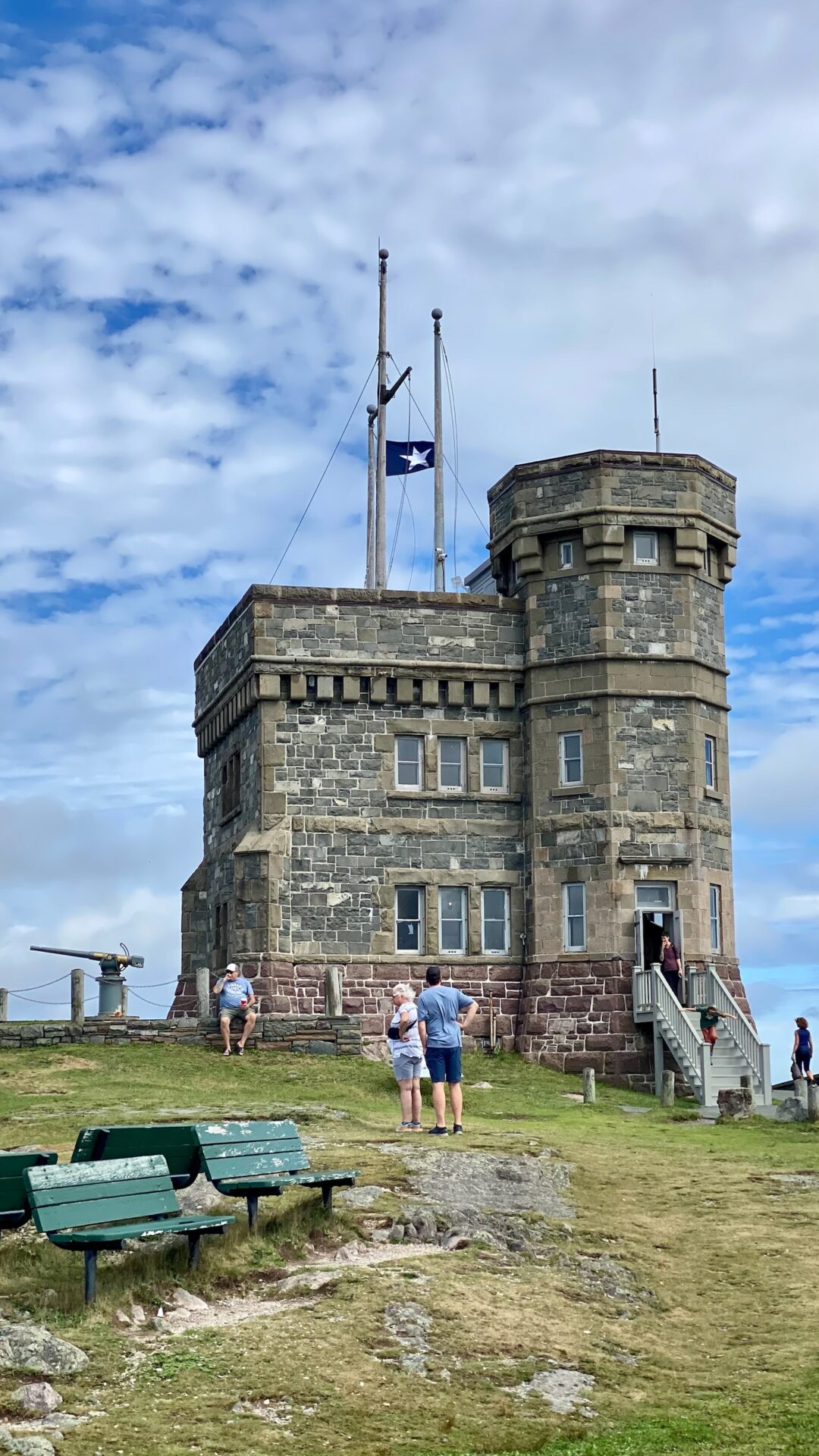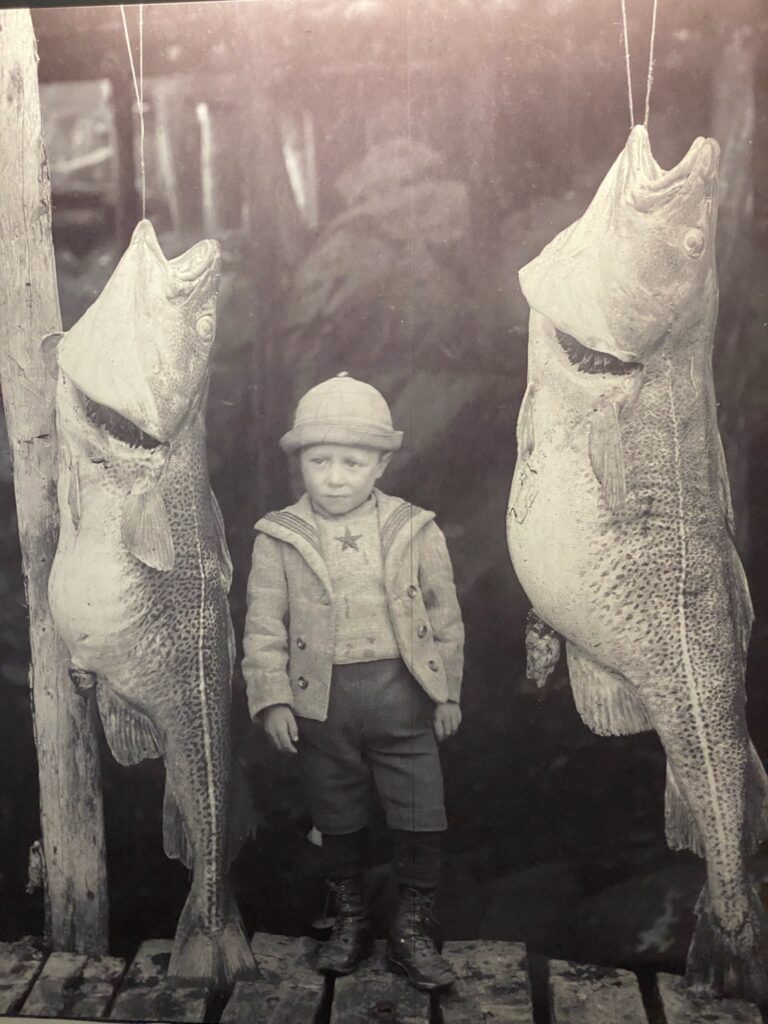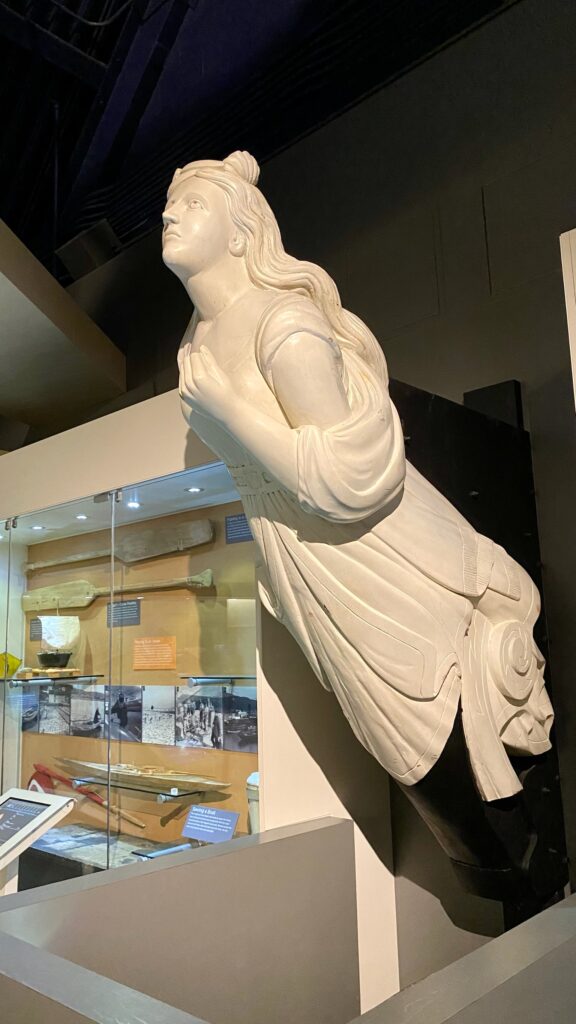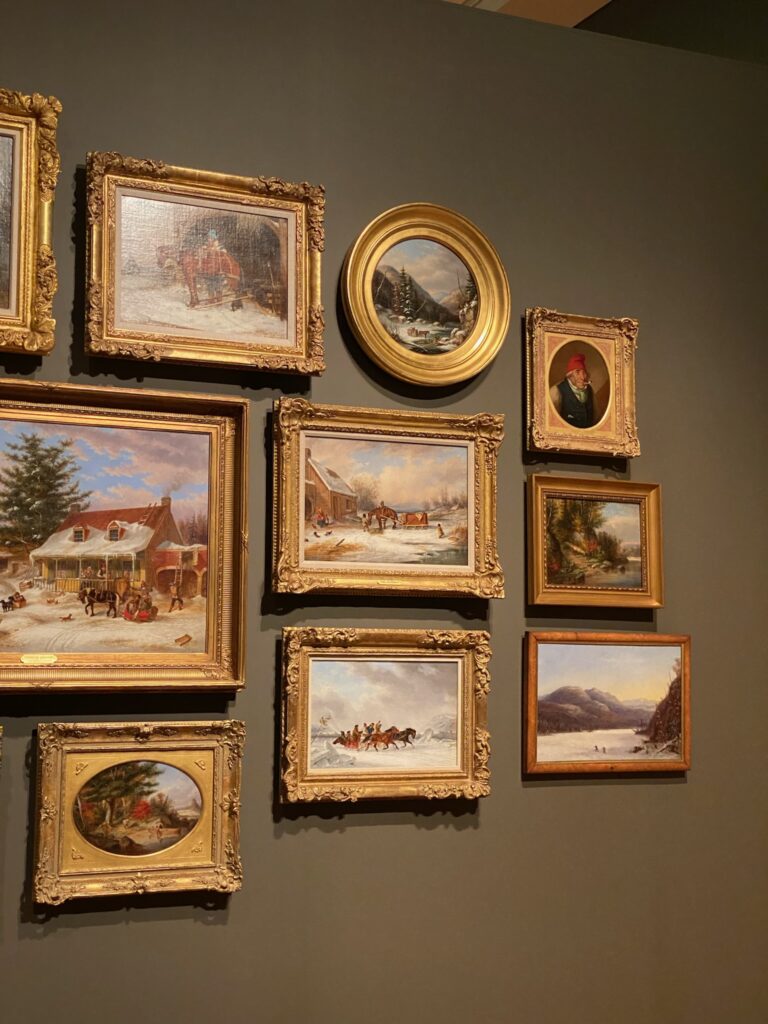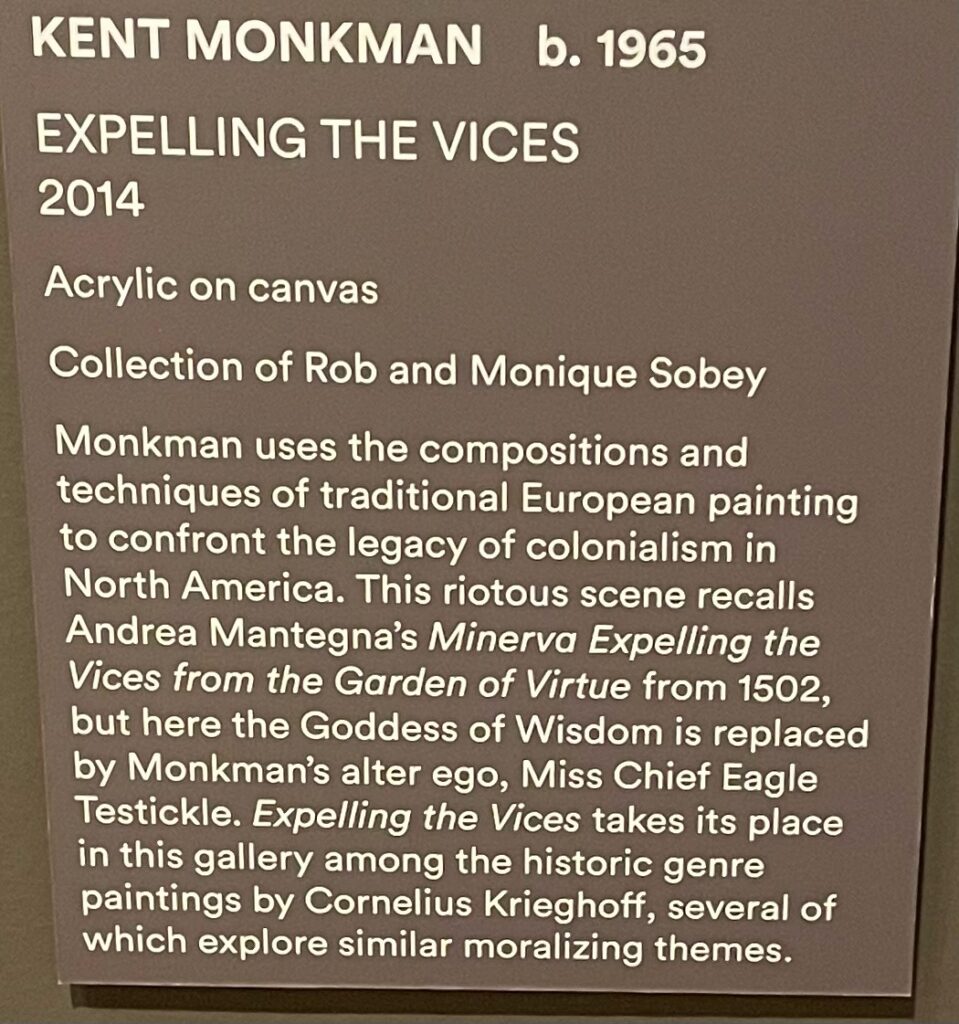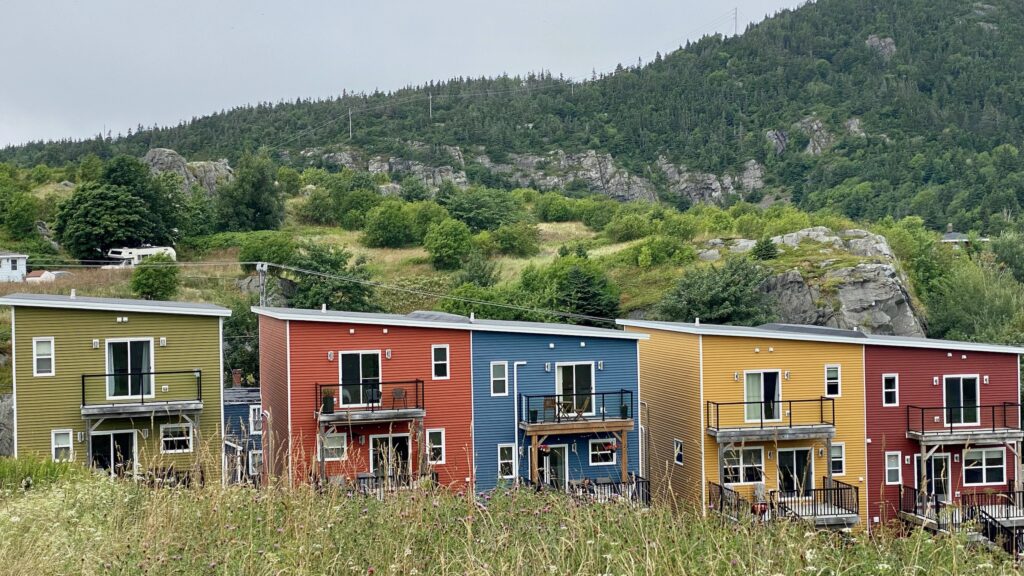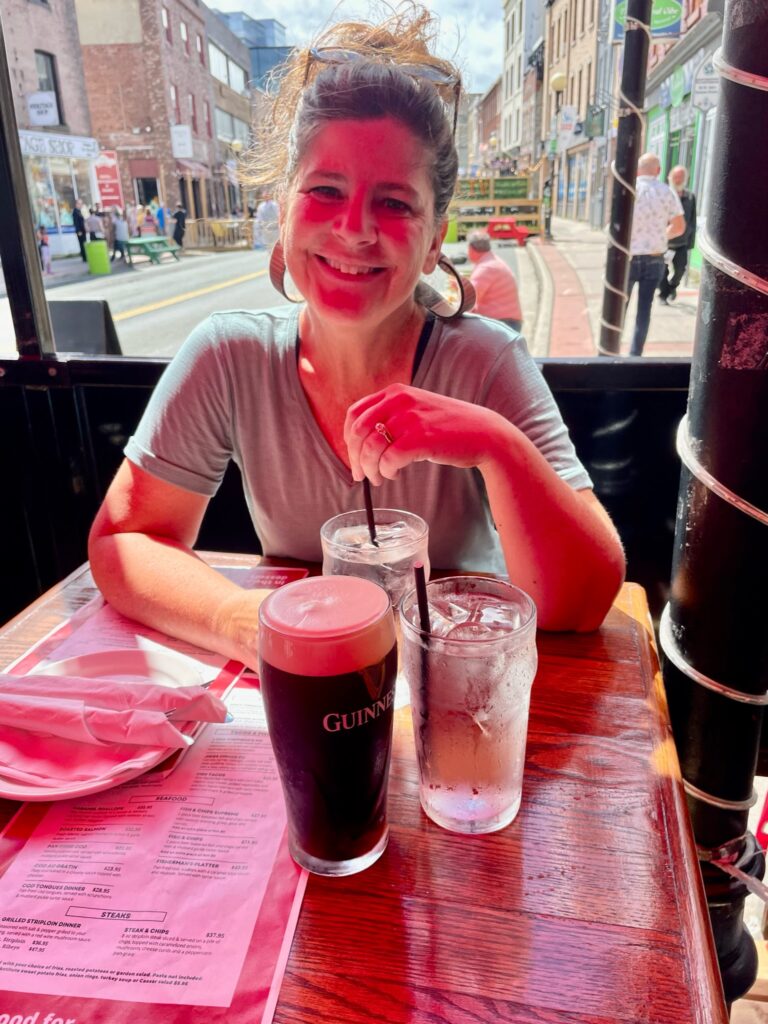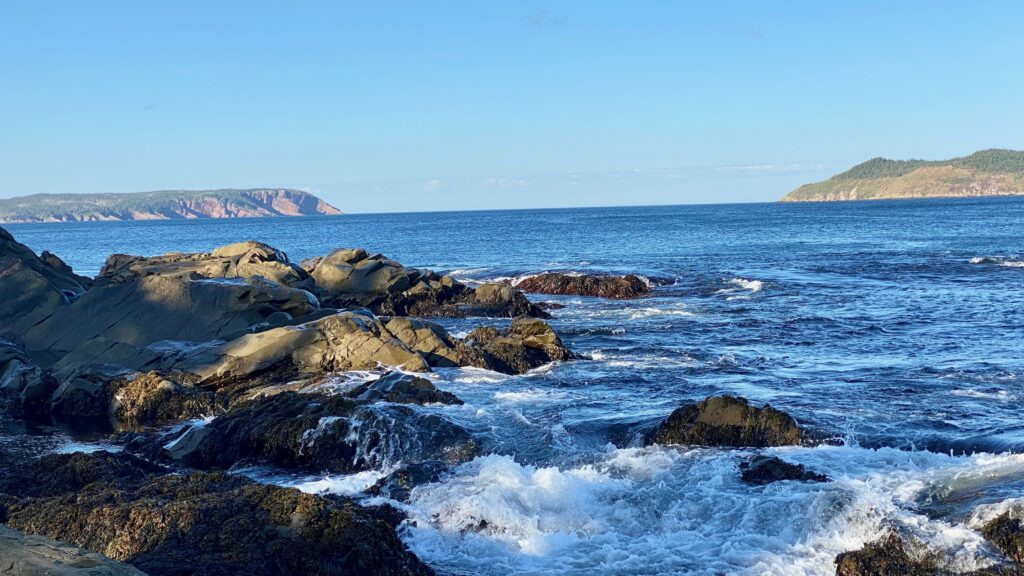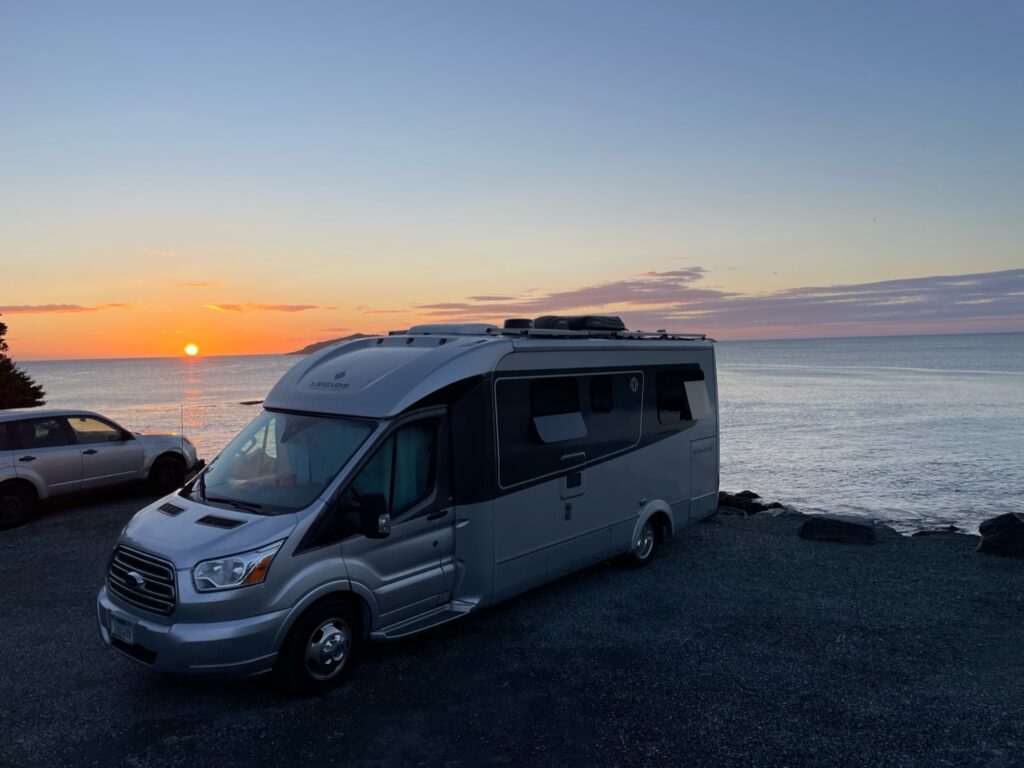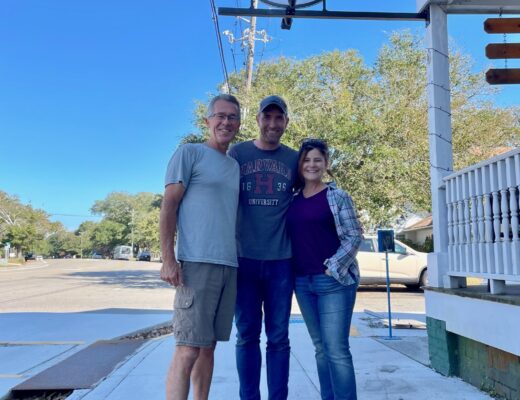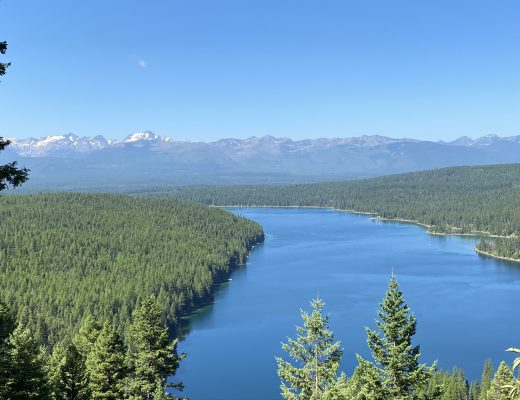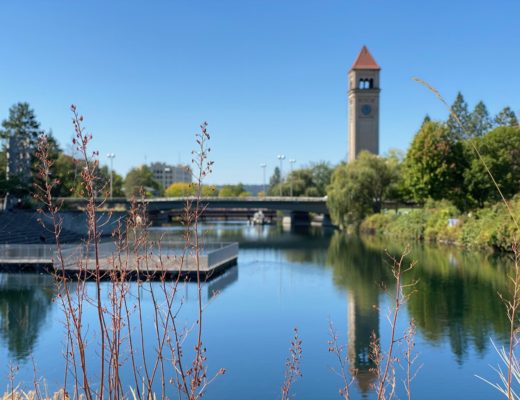St. John’s is, by far, the largest city in Newfoundland with about 186,000 residents (which is about the same size as Santa Rosa CA, Billings plus Missoula MT, and Eugene OR). Newfoundland’s second largest city is Corner Brook, which has less than 20,000 residents.
St. John’s has a long fishing industry history; is a major port; is the seat of Newfoundland’s government; and despite the cod moratorium that occurred in 1992 for over-fishing, has continued to boom due to the offshore oil industry, but these aren’t necessarily reasons to visit.
Even if your goal is seeing Newfoundland is to get away from it all and spend time in pristine natural areas readily found in Newfoundland, St. John’s is still worth a visit because this 500 year old city seamlessly integrates big-city luxury with small-town charm.
Although St. John’s is one of one of the oldest in the “New World” it is well maintained, easy to drive, and very walkable. You’ll find hotels (Marriott, Hilton, etc), shopping, dining, history, and art. So what should you do in St. John’s? Here are some suggestions.
Signal Hill, Cabot Tower Historic Site
This is a great place to start your tour of St. John’s because of its panoramic views of the city and harbor. The Cabot Tower dates back to 1898 and during the free tour of it you’ll learn about maritime signalmen, its importance for the military, and the first trans-Atlantic wireless message received by Guglielmo Marconi in 1901.
Bring good walking shoes if you want to walk down to Queen’s Battery for a look at some old military cannons. At noon each day they fire the traditional noonday cannon and for military fun, down at the Signal Hill Visitor Center in summer they usually have military drills, cannon and musket fires. It’s a top tourist attraction (even Elmo goes there when he’s in town), but there’s plenty to do so in the area so it didn’t feel that crowded once there, but parking is limited (especially if you’re a larger vehicle).
It was overcast the day we arrived and rain was headed our way so we moved on to an indoor activity at The Rooms, but returned to Signal Hill the next day, which was sunny and clear.


Overcast Day


Wow!
The Rooms
This is a large museum with multiple sections or rooms. In one area you can learn about Newfoundland’s history including its native culture, colonization, and the importance of cod fishing in the area. Another room is full of paintings, sculptures and mixed media art. You can also hear and try to play some traditional Newfoundland music.
Quidi Vidi’s Artist Colony
Just a short walk from downtown, lies a tiny inlet harbor that’s a haven for local artisans and craftspeople. Whether you’re interested in pottery, paintings, sculpture or crafts like knitting and crochet, you can find it here. It was quirky and fun. Even these rocks had artistic flair! Doug joked that the area was probably all run by the “Sock Mafia”. Even if it is, if you need local gifts or souvenirs this might be a great place to get them.
You can also visit a food truck and grab a pint at the huge brewery operation in the area. You won’t need directions to find the brewery as its an imposing building and the smell of its hops permeate the area.
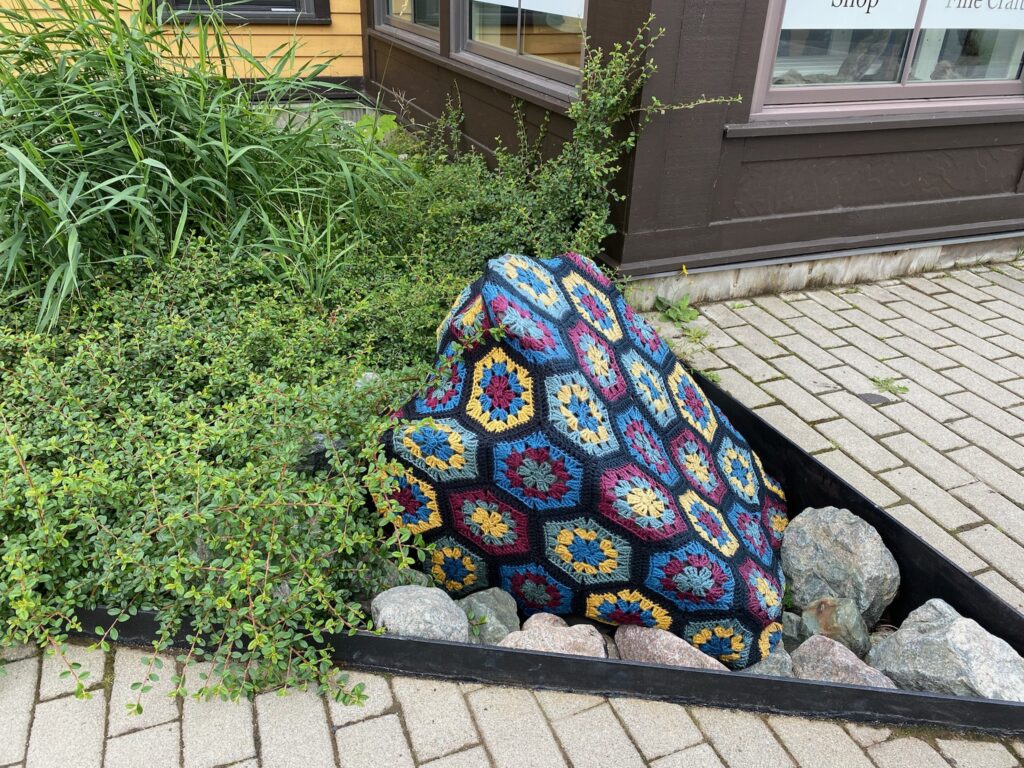
Covered Rock 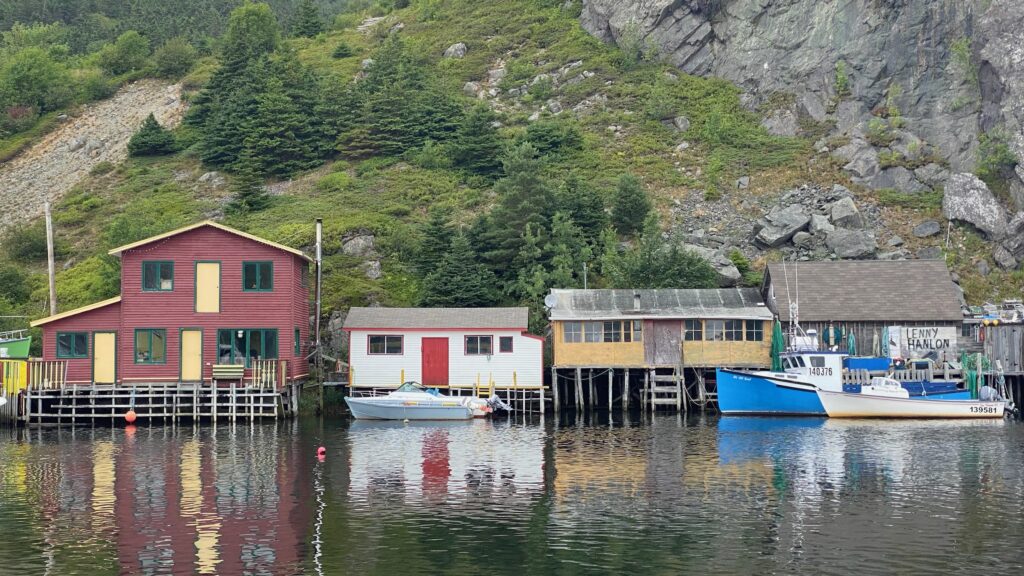
Quidi Vidi 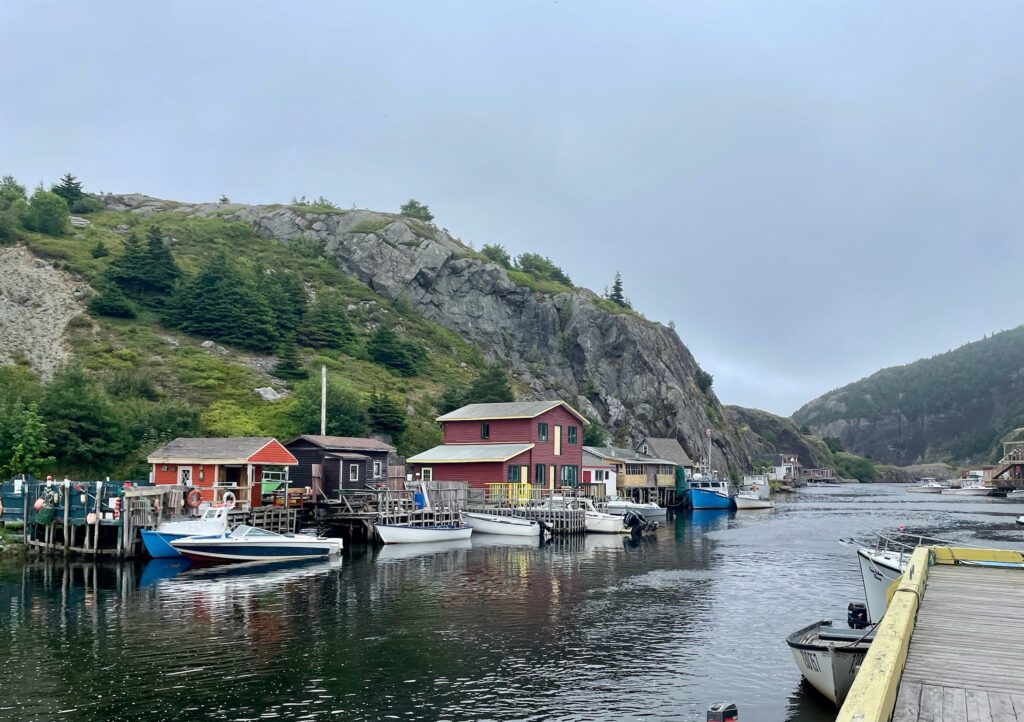
Cape Spear
Just a few miles southeast of St. John’s is Newfoundland’s oldest surviving lighthouse and a marker for the most easterly point in North America.
For a small fee (or free if you’ve already purchased a Canada Discover Pass) you can tour the restored 1836 lighthouse. It was interesting to see how the families that maintained this station lived underneath its tower and we gained a better understanding of how different flags were used to communicate the arrival of various ships to Signal Hill in St. John’s Bay. Rangers are there to answer any questions.
We boondocked in the parking lot with several other fellow RVers and it was great to wake up in the morning to tour the area before the busloads of tourists arrived. This is a relatively flat, paved parking lot with great cliffside views so we recommend the overnight free stay.
The walk to the most easterly point is easy, fun, and passes through the remains of Fort Cape Spear, a WWII coastal battery.
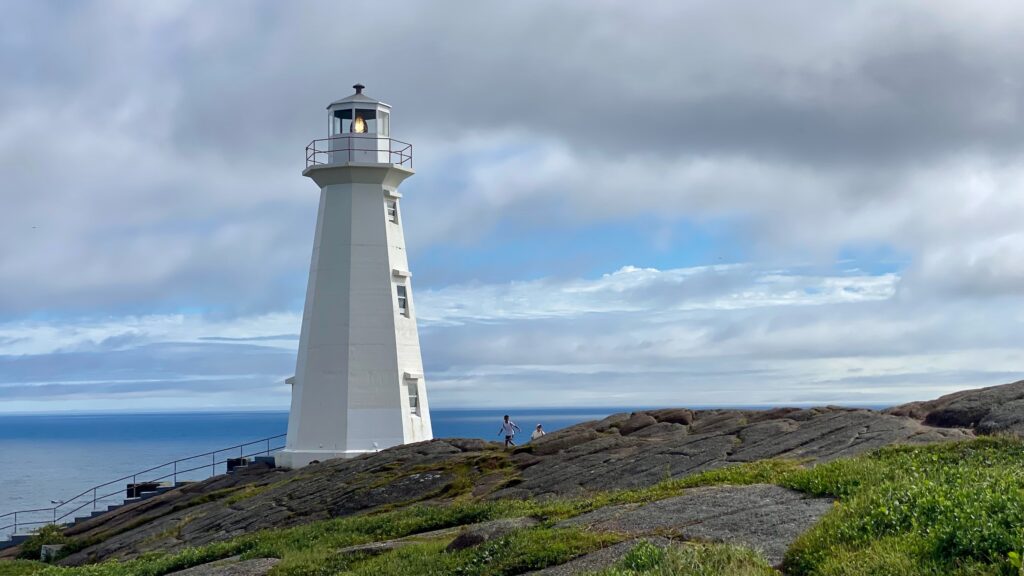
Cape Spear 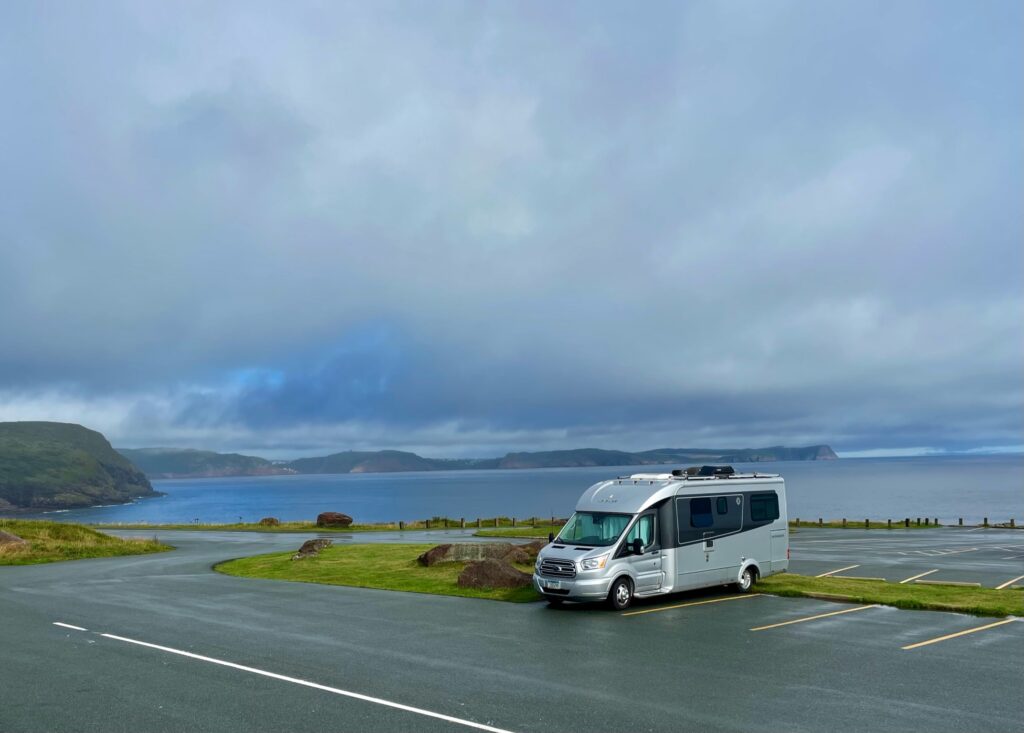
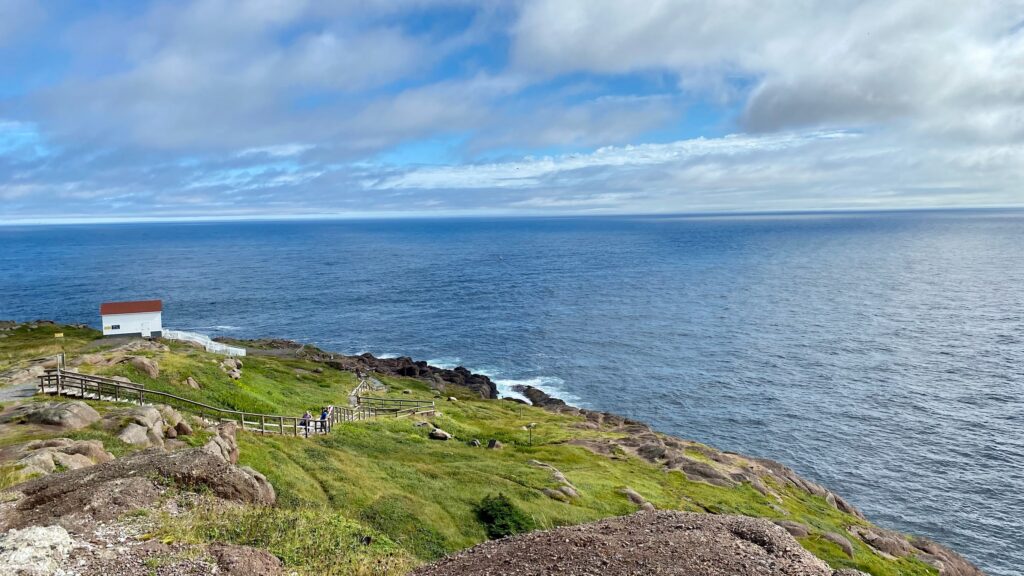
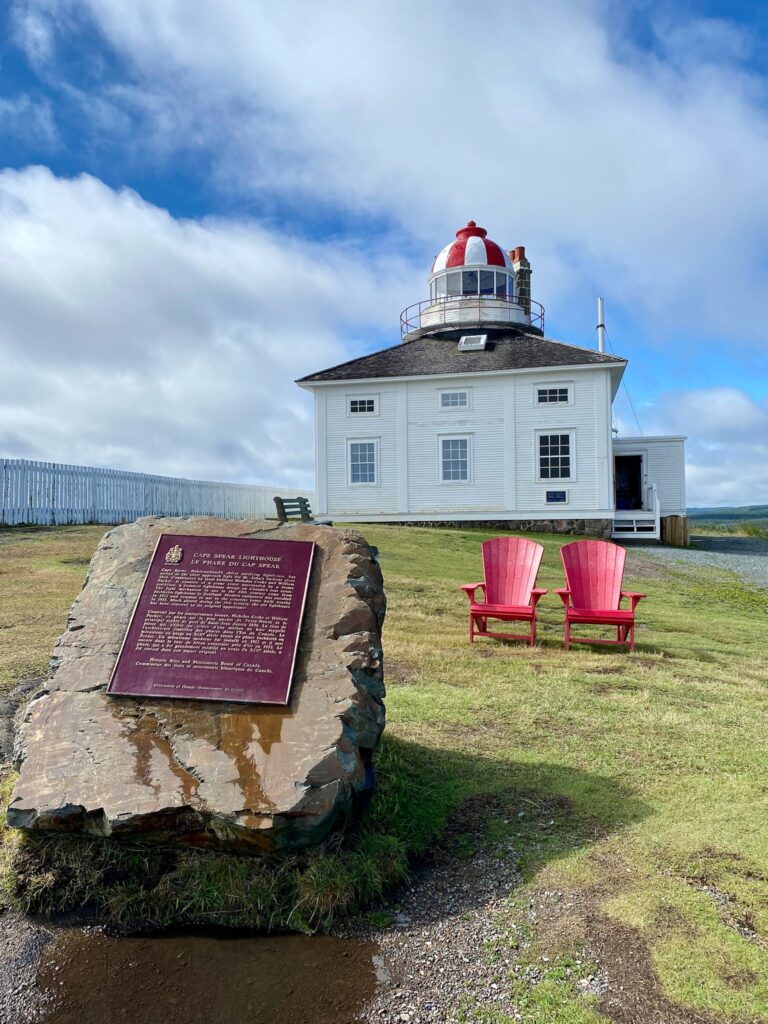
Historic Lighthouse 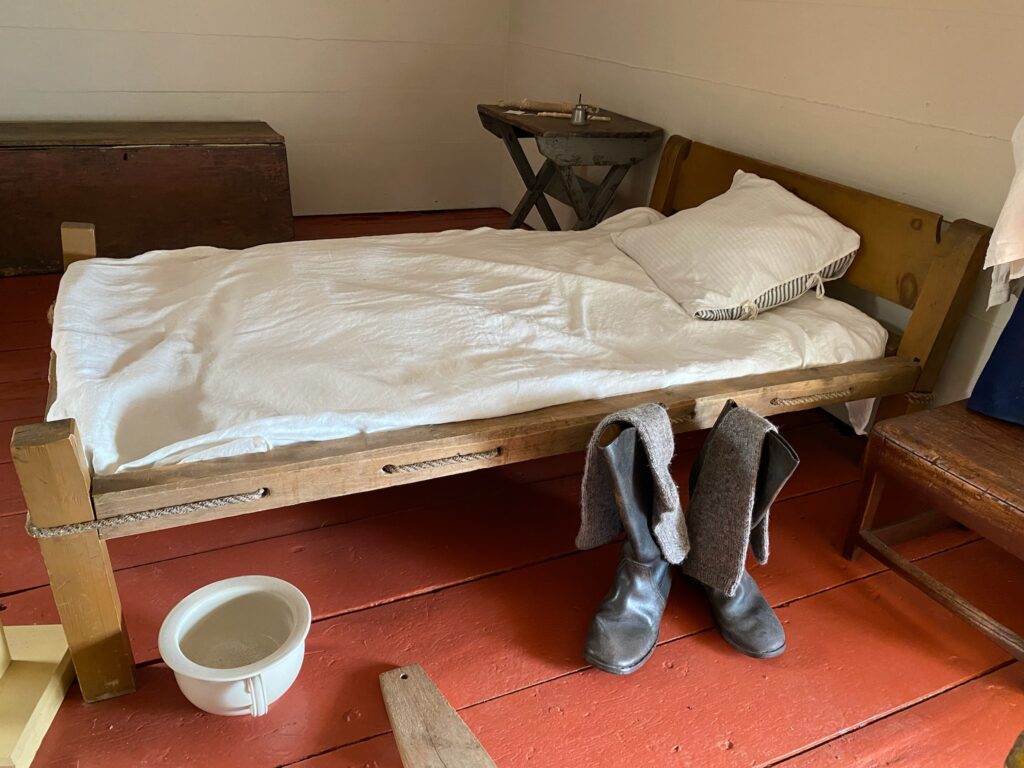
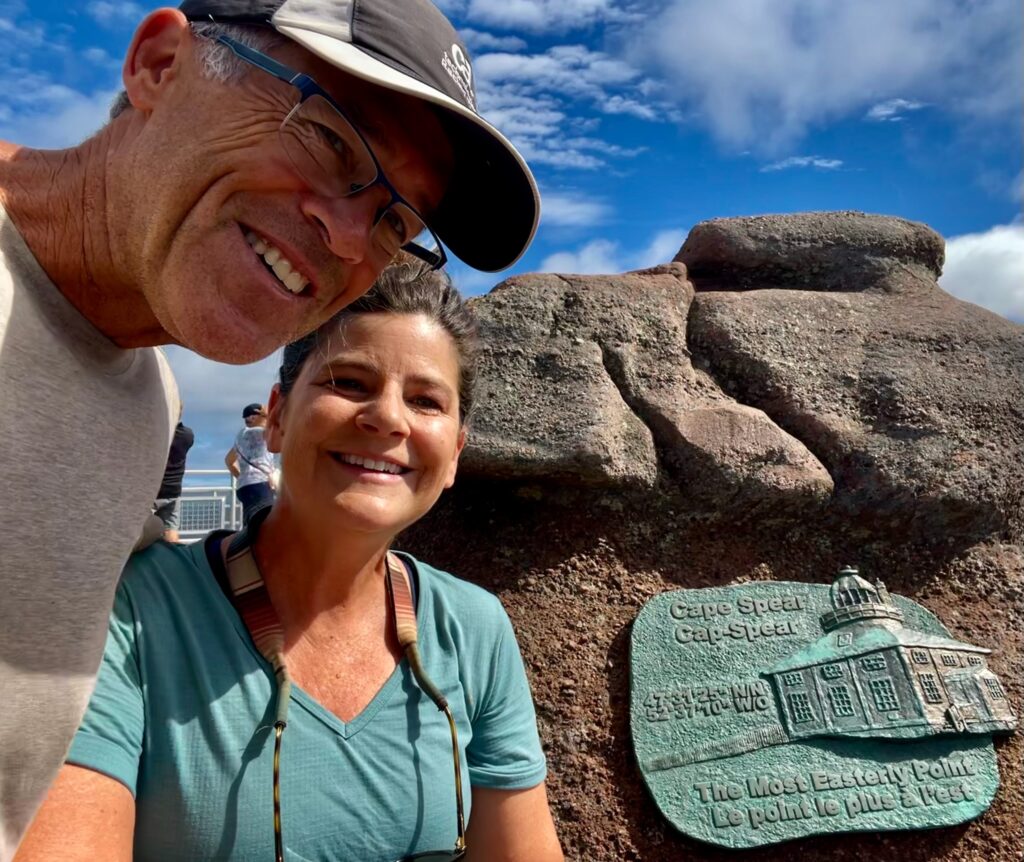
Jelly Bean Row and Other Architecture Around Town
Although “Jelly Bean Row” isn’t one specific section of St. John’s, you’ll notice if you drive or walk around that this town has a wonderful Caribbean vibe due to the M&M colored homes lining nearly every street! After a rainy evening boondocking at the lighthouse, the sun had come out just in time to tour that area before heading back into St. John’s to view the colorful houses more closely. Their vibrance will put a smile on your face every time.
Whether driving or walking you’ll probably notice the wonderful architecture of the Basilica of St. John the Baptist. This mid-1800’s built Roman Catholic Church is a National Historic Site and it’s not the only church that may stop you in your tracks. The Anglican Cathedral of St. John the Baptist is a pure example of neo-Gothic architecture.
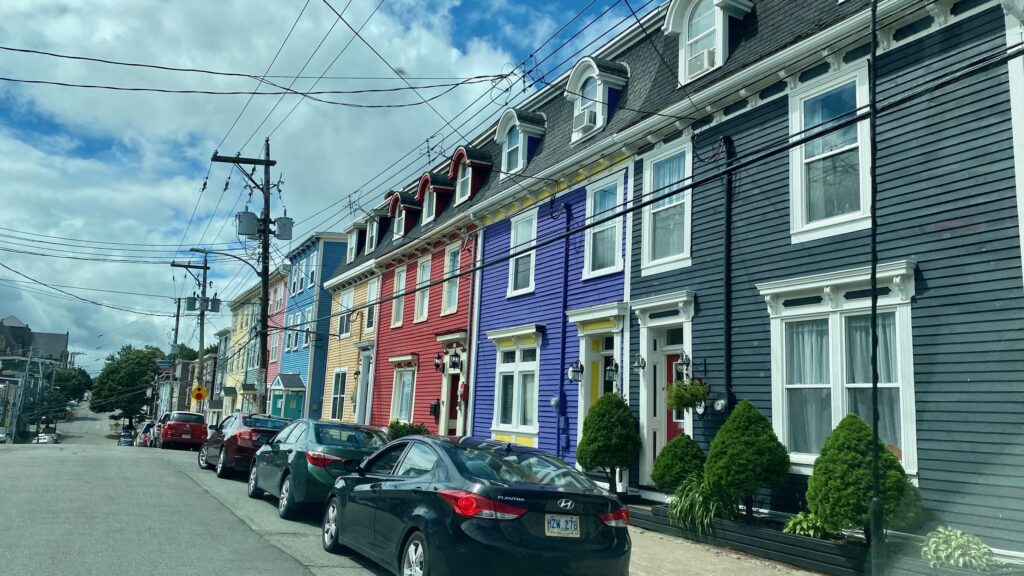
Jelly Bean Row 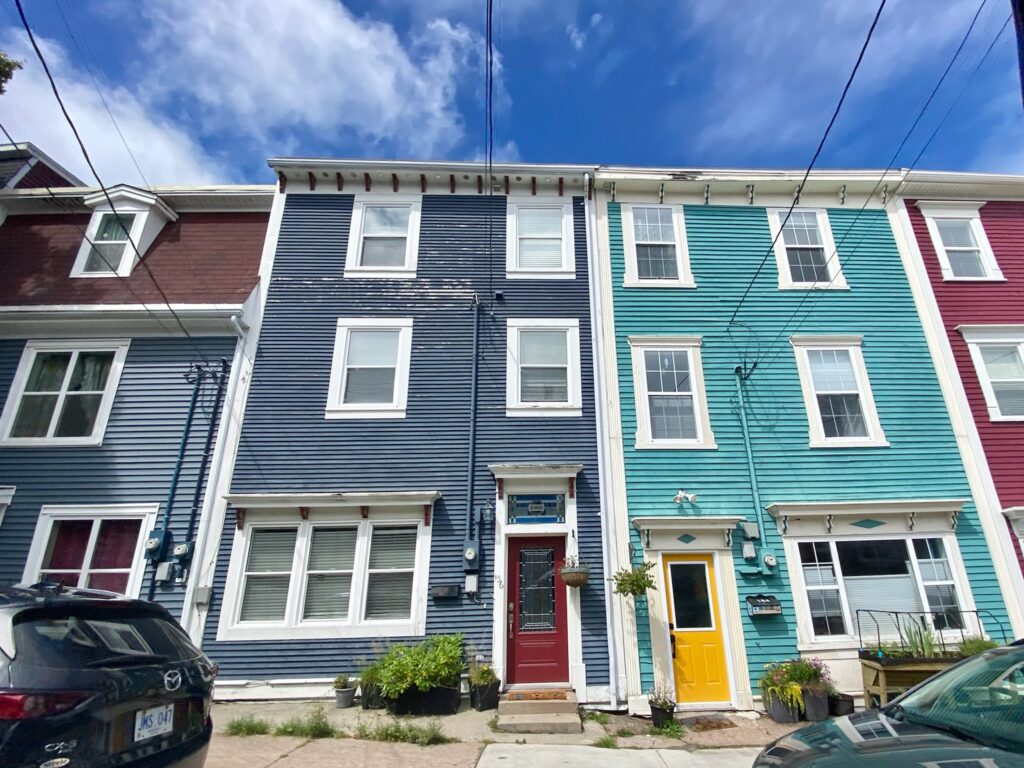
George Street Music
We had heard that George Street in St. John’s was the place to be for Irish and Scottish inspired maritime music. This entertainment district is likely busy in the evening when the street is closed to traffic; you can get “screeched in” (i.e. with a shot of screech run, a kiss a cod, and a short recitation, you can become an honorary Newfoundlander); and there’s no such thing as “closing time”.
We thought we might at least find some live music here while grabbing a little lunch, but much like Bourbon Street in New Orleans, this area is probably better in dim lighting. It didn’t smell great from the party goers the night before and most of the establishments, like their patrons, looked a bit hungover mid-day.
We popped down a block or two closer to the harbor and found tons of outdoor cafes open for lunch. Grab some ice cream afterwards if you enjoy boutiques.
Witless Bay
We boondocked at Ragged Point next to Witless Bay. There weren’t many spots available, and this might have been difficult with a larger RV (ours is only 24.5ft long), but it was just beautiful. Like Northern California, this area boasts steep cliffs and a large rocky coastline. We walked the cliffside Ragged Point Trail to enjoy the evening before sunset.
It is said that Witless Bay is one of the best places to see whales in June and July, even from the coast. If you aren’t RVing, there are whale watching tours that take you into the bay.
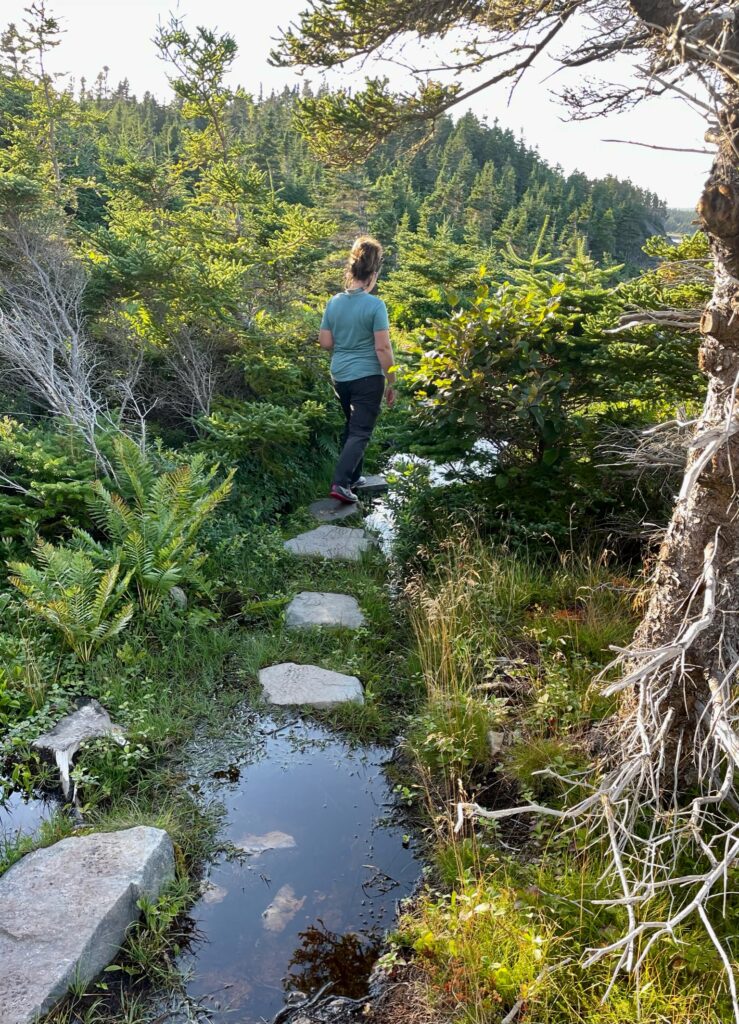
Ragged Point Trail 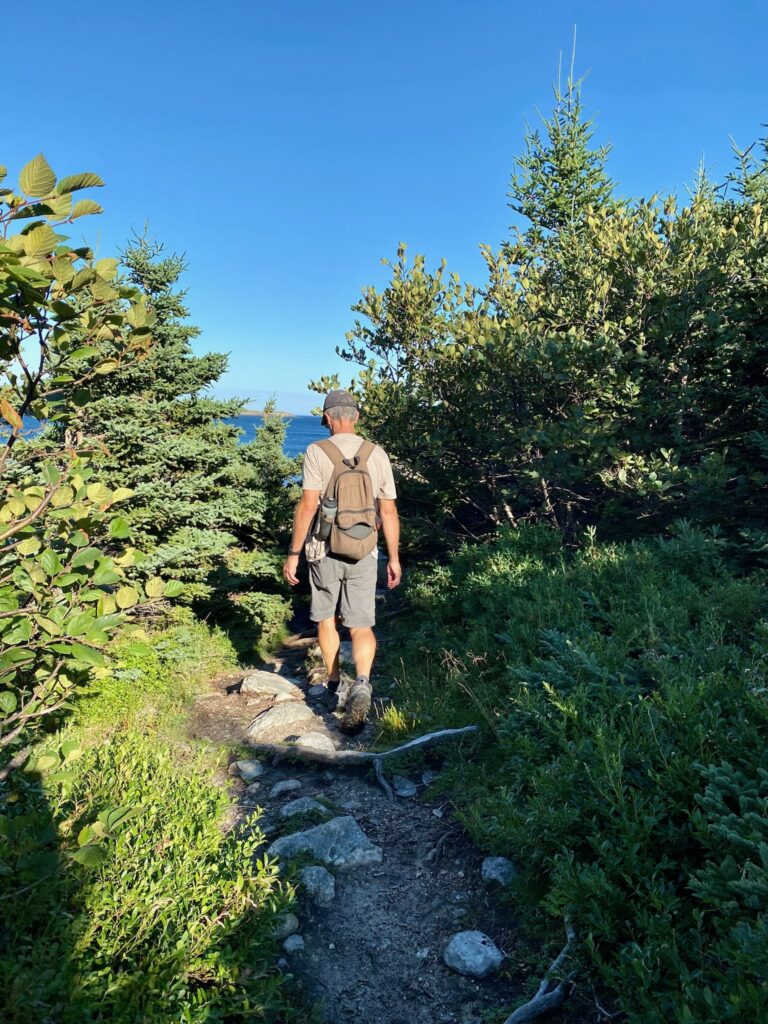
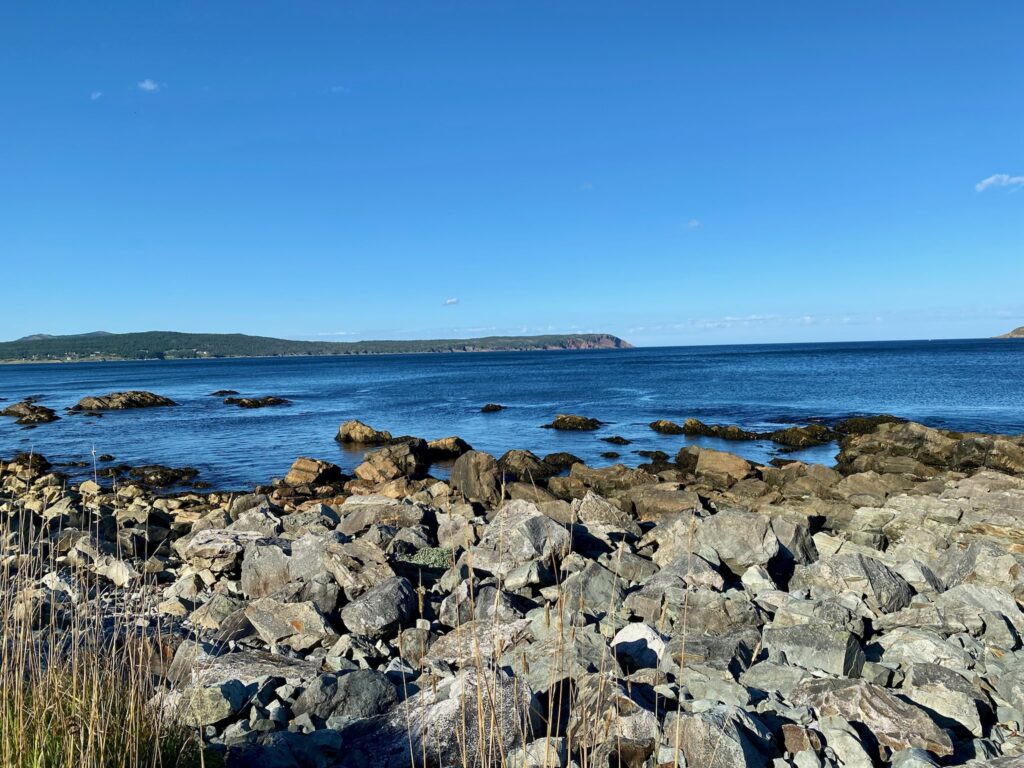
Puffin and Whale Watching Tours
Newfoundland’s east coast is home to North America’s largest puffin colonies. 90% of them breed in this area. Their distinct orange beaks which turn this color to attract a mate will be on full display from mid-June to mid-July. We were there a little later in the year but there were still plenty of puffins to see on our Bull’s Bay boat tour (link to tour group here) past their breeding island. Bring binoculars and/or a massive 35mm camera lens if you want to get a great picture though as these little birds are less than 6in tall and they burrow into the grassy hillside to nest. We couldn’t get great photos with an iPhone, but would have paid for the pleasure over and over again anyway as they’re absolutely adorable and fun to watch both on shore and as they leap off the cliff into the water. Just loved it and this was one of our main reasons for heading all the way to St. John’s even though we had only a few weeks on the entire island.
SIDE NOTE: Some people then ferry back to Nova Scotia from St. John’s (thus making a one-way trip across the island), but this ferry ride is long. So long that we were pretty sure that poor Bailey’s bladder would have exploded as dogs are confined to the RV during travel and owners are not allowed in their cars.
We were also late in the season for whales but we did see a sunfish. Plus, our crew provided lots of heritage information about the area and some lovely maritime songs on the journey there and back.
Whales and puffins, two more good reasons we’re hoping to return to Newfoundland in the future.
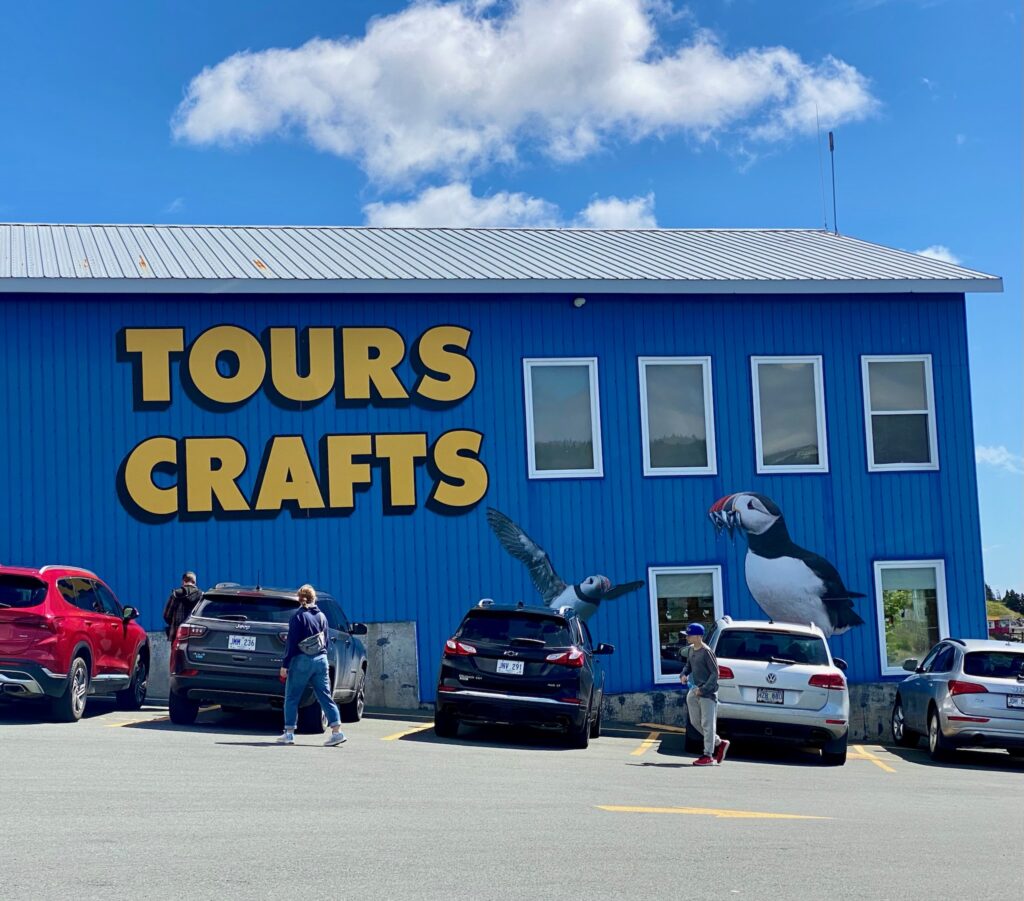
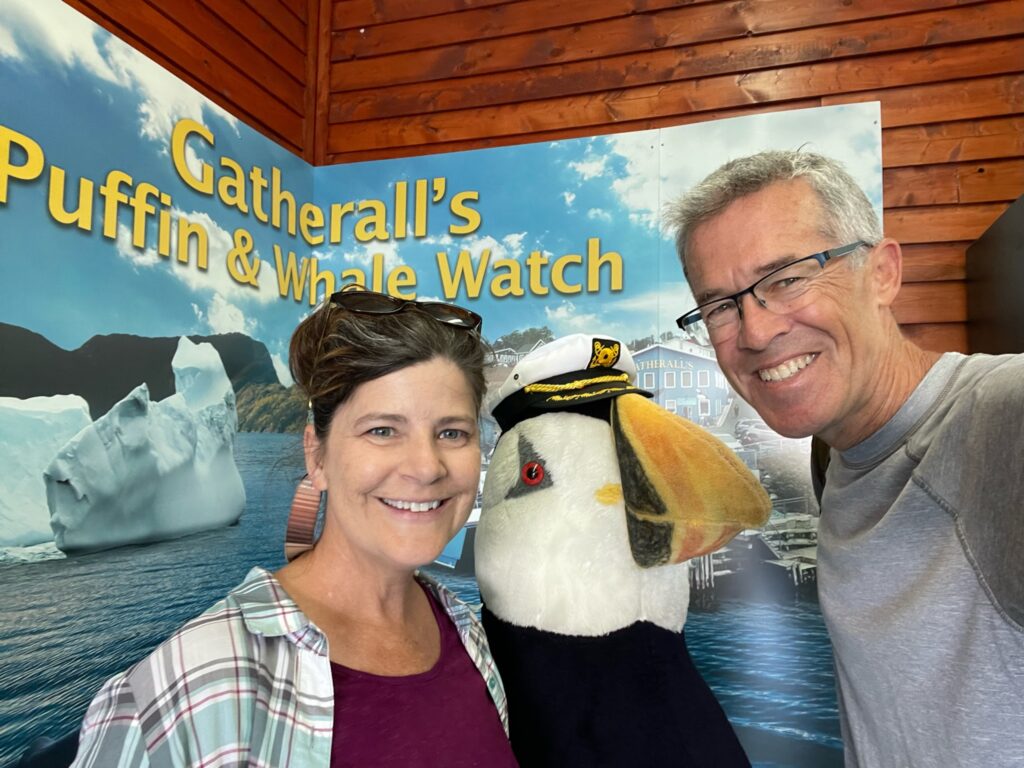

On the boat
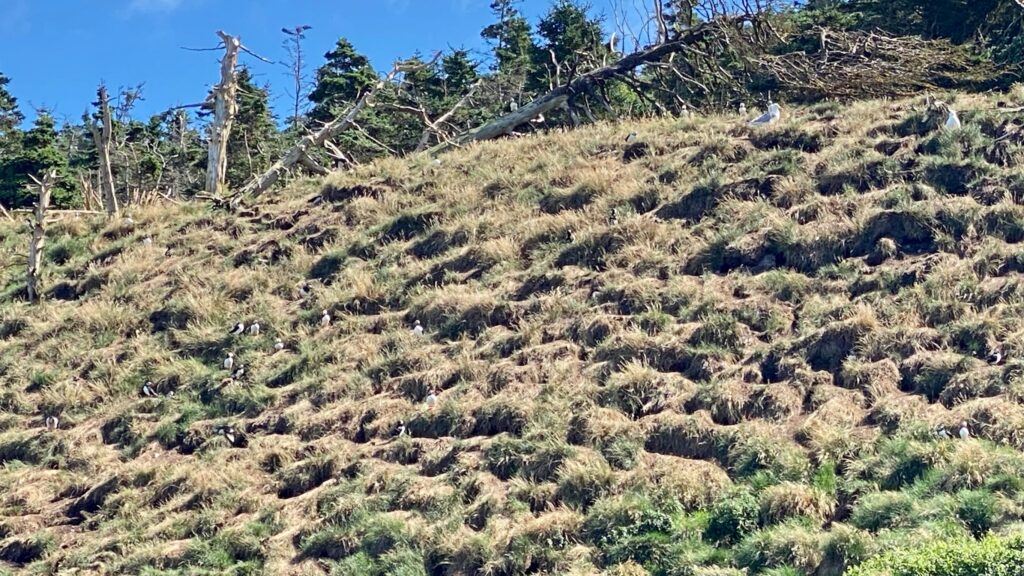
Puffins 
Hillside of other birds 
Zoomed in
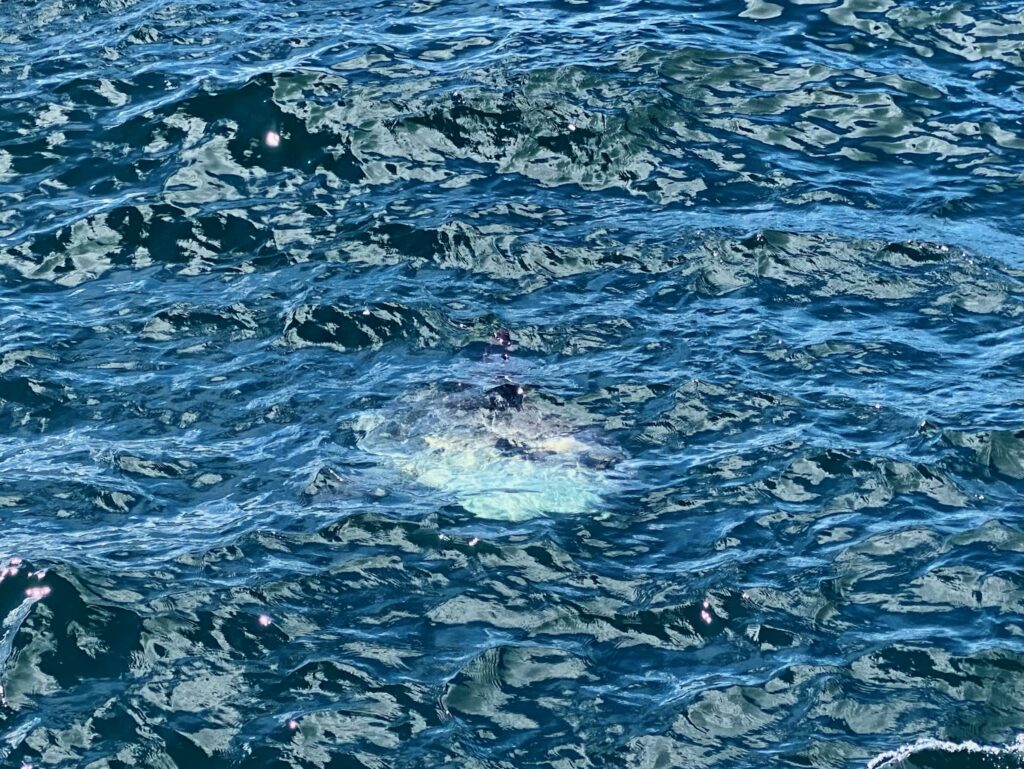
Huge Sunfish
We saw a lot in the St. John’s area in just 3 days, but there is plenty more to do here if you decide to stay longer. We learned some history, saw some vibrant and unique architecture, splurged on some meals out, avoided conflict with the “Sock Mafia”, viewed some local and curated art, heard some maritime music on a boat tour, laughed at puffins, had gorgeous boondocking locations, and touched the most easterly point in North America. All-in-all, a smashing good time!
For more Newfoundland travel follow us on Instagram @wonderwherenow

